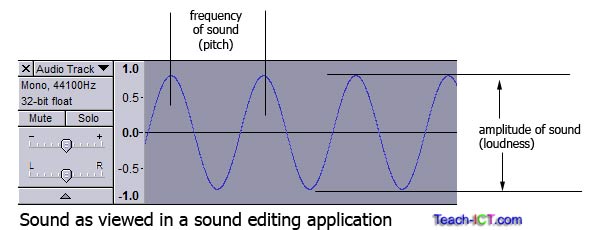3. What is sound
From your physics or science class you probably remember that sound is actually the subtle movement of air (vibration) causing your eardrum to move in sympathy.
Your brain senses this eardrum movement as 'sound'.
Sound is measured in 'cycles per second' or 'Hertz'. This is the frequency of sound. You sense this as the pitch of the sound.
As well as the speed of vibration, there is also the loudness of the sound. Sound is a wave - the loudness is in effect, the height of the wave. This is called the 'amplitude' of the sound.
The picture below shows what a pure sound looks like in a sound editing application such as the free Audacity software.

If the air is moving relatively slowly, you sense this as a low pitched bass sound. You can hear vibration down to about 20 cycles per second (20 Hz). (Listen to this bass MP3 file)
And if the air is moving quickly, then you sense this as a high pitched treble sound. You can hear sound up to about 20 thousand cycles per second (20 kHz). (Listen to this high pitch sound)
Of course, most sound is a mixed up collection of different frequencies.
If you enjoy the quality of the sound, you may call it 'music'. If you are not enjoying the sound, then it is a 'cacophony', 'racket', 'noise' or whatever term is nasty at the moment..
( One person's music is another person's cacophony - it is a matter of opinion!)
The task, then, is to convert sound in the range 20 Hz - 20 KHz. and to deal with a range of amplitudes.
Challenge see if you can find out one extra fact on this topic that we haven't already told you
Click on this link: what is sound
